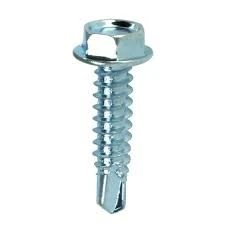double ended threaded studs metric
Double Ended Threaded Studs Understanding Metric Applications
Double ended threaded studs are an essential component in various engineering and construction applications, particularly in situations where secure fastening and adjustable connections are necessary. These studs, characterized by their threaded ends, are designed to provide a reliable means of joining two components or creating a connection that can withstand dynamic loads and environmental stressors. In this article, we will explore the design, applications, and advantages of double ended threaded studs in metric specifications.
Design and Specifications
Double ended threaded studs typically feature threads on both ends, allowing them to be inserted into pre-drilled holes in two separate components. The central shank of the stud remains unthreaded or may feature different characteristics, such as a reduced diameter, to accommodate specific applications. The threads can be unified, meaning they conform to a standard measurement system, or they can vary in pitch and diameter, depending on the requirements of the project.
Metric threaded studs adhere to the International System of Units (SI), which is widely adopted across the globe, particularly in countries that favor the metric system. Common diameters for metric double ended threaded studs include M3, M4, M5, M6, M8, M10, and larger. The pitch of the thread is also critical; standard pitches for metric threads can vary, including fine and coarse options, ensuring that engineers can select the right type for their specific load and environmental conditions.
Applications
The versatility of double ended threaded studs makes them suitable for a multitude of applications across different industries. They are commonly found in automotive, construction, manufacturing, and electrical applications. In automotive engineering, for instance, double ended studs are employed to secure components such as engine mounts and suspension setups. Their adjustable nature allows for precise positioning and alignment, which is crucial in ensuring optimal performance.
In the construction industry, these studs play a crucial role in structural applications, such as securing beams and trusses. Their robustness and ability to handle high stress make them ideal for use in heavy load-bearing structures. Similarly, in the manufacturing sector, they are employed in assembly processes where components need to be temporarily or permanently joined while allowing easy disassembly when required.
double ended threaded studs metric

Electrical applications also benefit from double ended threaded studs, particularly in securing enclosures, panels, and equipment. The ability to provide a secure connection while maintaining electrical insulation makes them a favorite among electrical engineers.
Advantages
The use of double ended threaded studs offers several advantages. First and foremost, their design simplifies the assembly process. By allowing for connections to be made from both sides, they enhance accessibility, particularly in tight spaces where traditional fasteners may be difficult to use. This feature is especially valuable in mechanical and structural assemblies where components may not be easily alignable.
Another significant advantage is the enhanced load distribution. The double-ended design allows for more even weight distribution across the joined materials, significantly reducing the risk of stress concentrations that can lead to material failure. This aspect is particularly advantageous in applications where safety is paramount, such as in high-stress environments.
Moreover, double ended threaded studs are available in various materials, including stainless steel, carbon steel, and alloys, offering corrosion resistance and durability in challenging environments. Selecting the right material can significantly extend the lifespan of the connection being made.
Conclusion
In conclusion, double ended threaded studs in metric specifications are an invaluable component in numerous engineering and construction applications. Their design, versatility, and advantages make them a preferred choice for ensuring secure and reliable connections in various fields. As industries continue to evolve, the demand for high-quality fastening solutions will undoubtedly make double ended threaded studs a staple in both current and future engineering practices. Understanding their application and benefits is essential for anyone involved in design, construction, or manufacturing processes.
-
Weatherproof Plastic Expansion Anchors for OutdoorNouvèlJun.06,2025
-
Sustainability in the Supply Chain: Eco-Friendly TEK Screws ProductionNouvèlJun.06,2025
-
Load-Bearing Capacity of External Insulation FixingsNouvèlJun.06,2025
-
Double Head Bolts: Enhancing Efficiency in Industrial MachineryNouvèlJun.06,2025
-
Corrosion Resistance in Chipboard Screws: Coatings for Wholesale DurabilityNouvèlJun.06,2025
-
Butterfly Toggle Bolts : Enhancing Structural ResilienceNouvèlJun.06,2025
